Abstract
All types of tuberculin, crude and pure alike, have in the past been assayed by “matching” the skin reactions they produce in sensitized animals with those produced by the International Standard for Old Tuberculin; furthermore, a variety of sensitizing antigens have been used. Such “matching” assays are not easy to analyse statistically.
An assay is described, based on the linear relationship between the diameter of the skin reaction and the logarithm of the dose of tuberculin. This type of assay is shown to be precise. It eliminates the need for preliminary titrations and provides information about the slope of the dosage-response lines, and it yields fiducial limits of error from the internal evidence of the assay.
Using this method, a comparative study is made of the effects of varying both sensitizing antigens and test allergens. It is shown that there is sufficient heterogeneity among these different types of tuberculins to make invalid their comparison in terms of a single standard, namely, the International Standard for Old Tuberculin.
Full text
PDF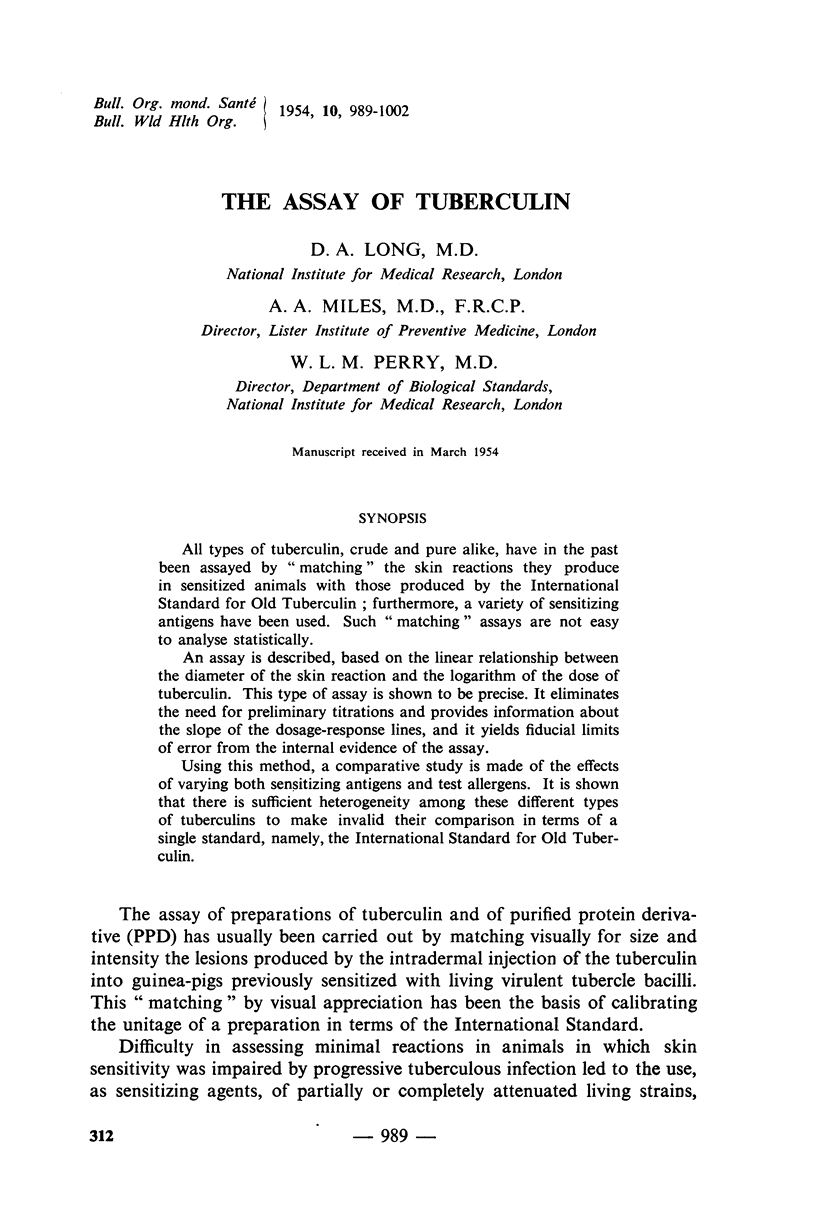
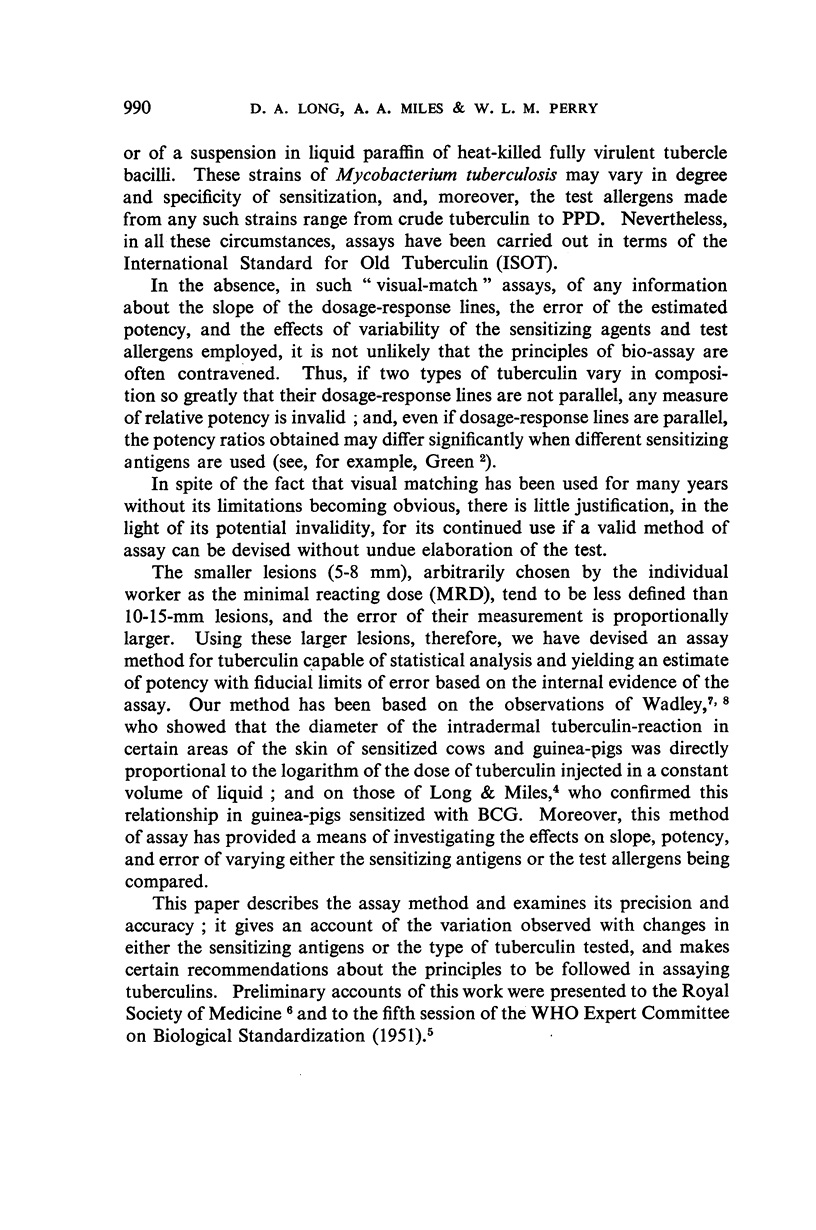
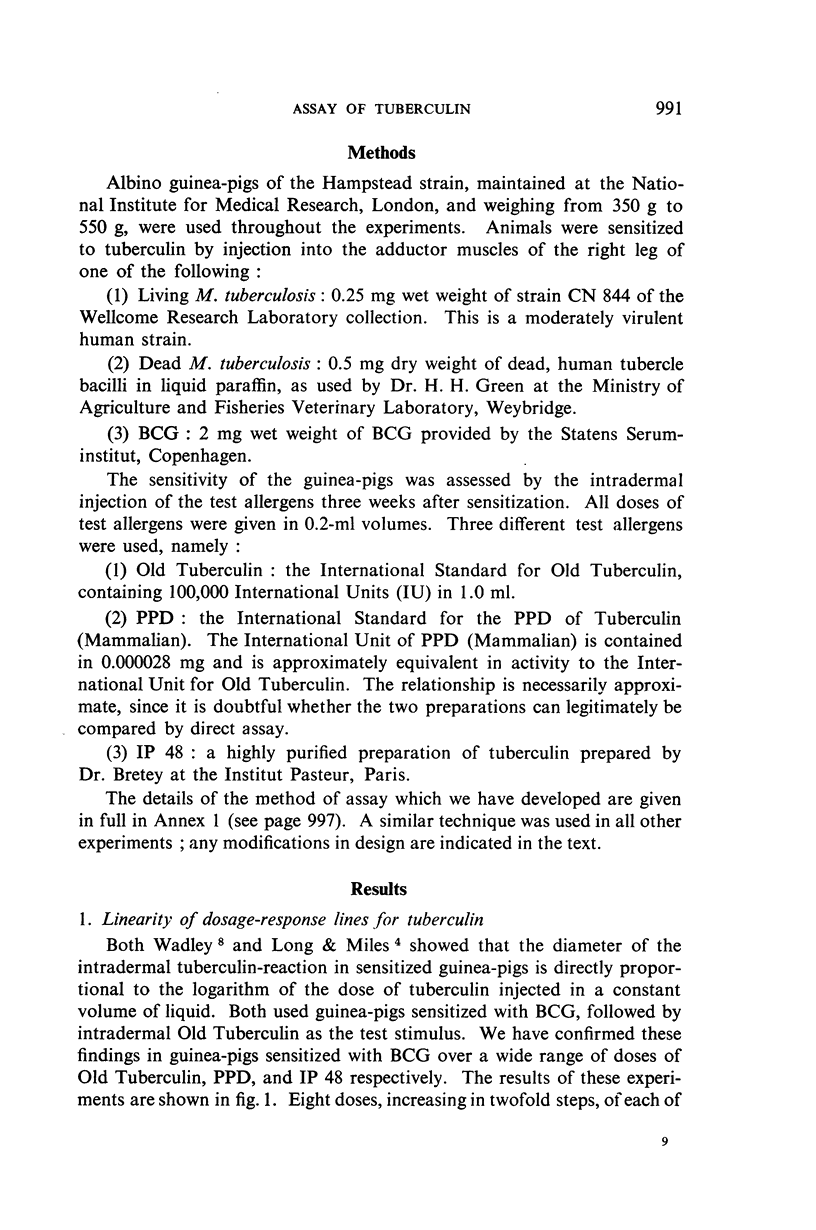

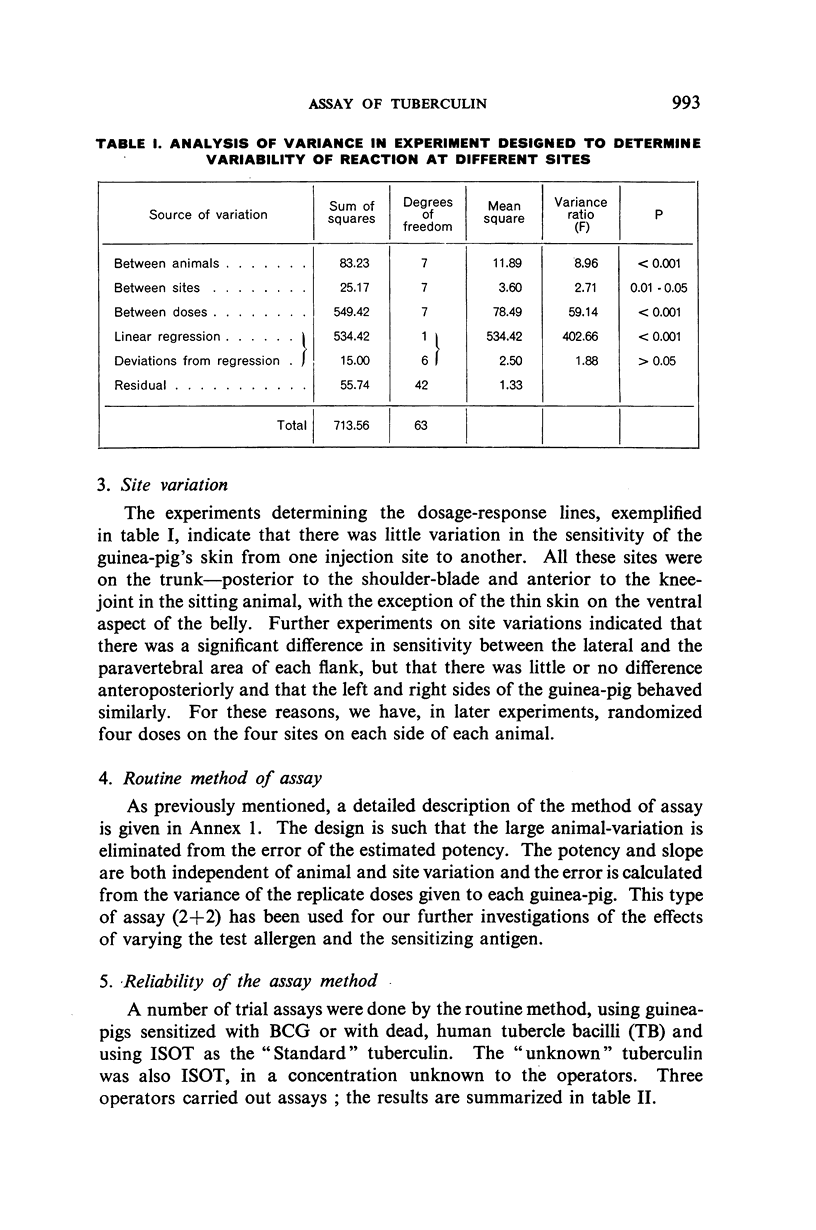

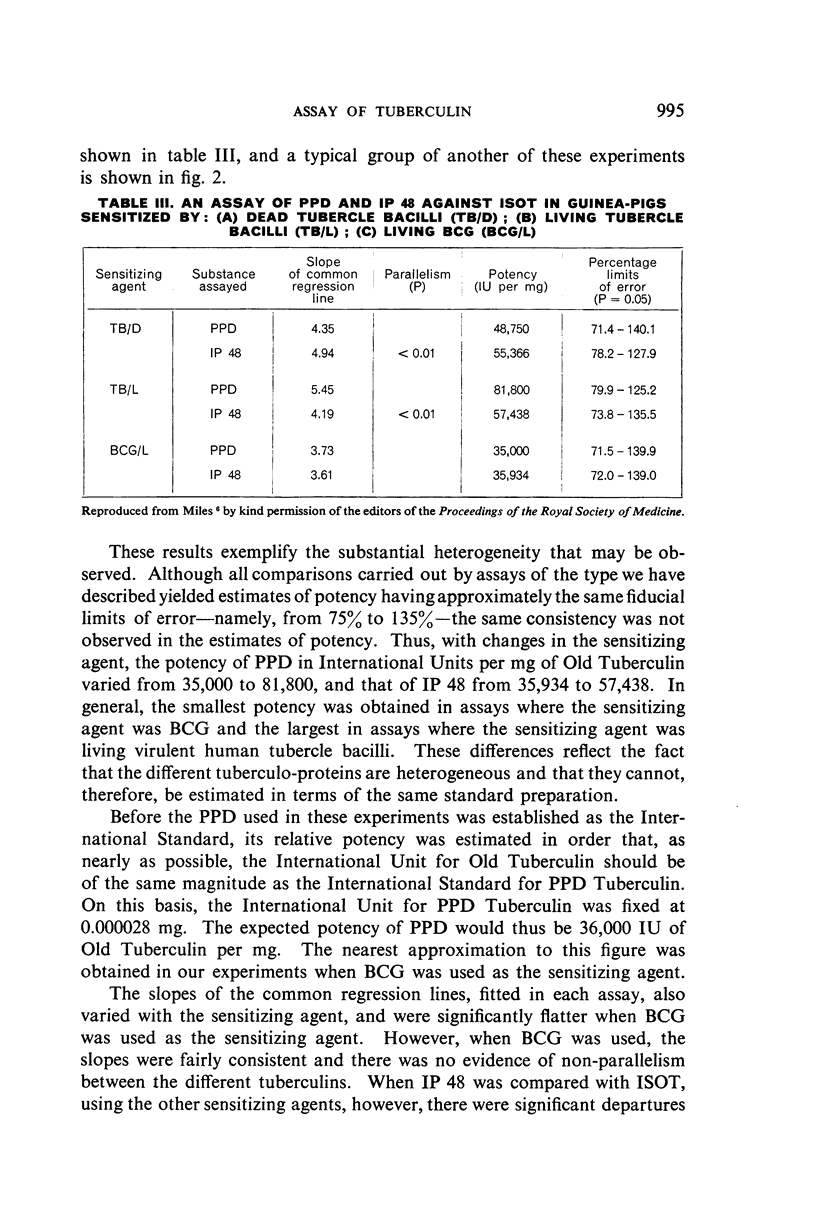
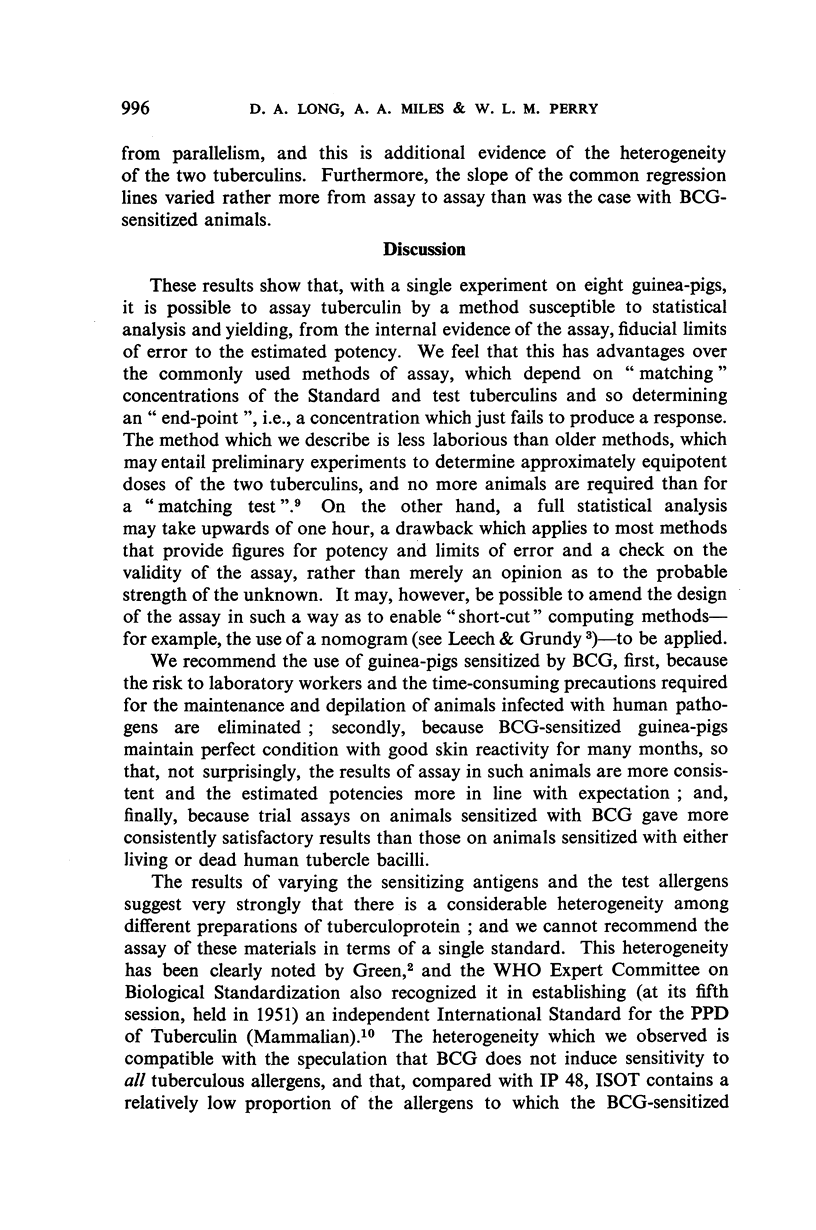






Selected References
These references are in PubMed. This may not be the complete list of references from this article.
- LEECH F. B., GRUNDY P. M. A nomogram for assays in randomized blocks. Br J Pharmacol Chemother. 1953 Sep;8(3):281–285. doi: 10.1111/j.1476-5381.1953.tb00795.x. [DOI] [PMC free article] [PubMed] [Google Scholar]
- WADLEY F. M. The use of biometric methods in comparison of acid-fast allergens. Am Rev Tuberc. 1949 Jul;60(1):131–139. doi: 10.1164/art.1949.60.1.131. [DOI] [PubMed] [Google Scholar]


